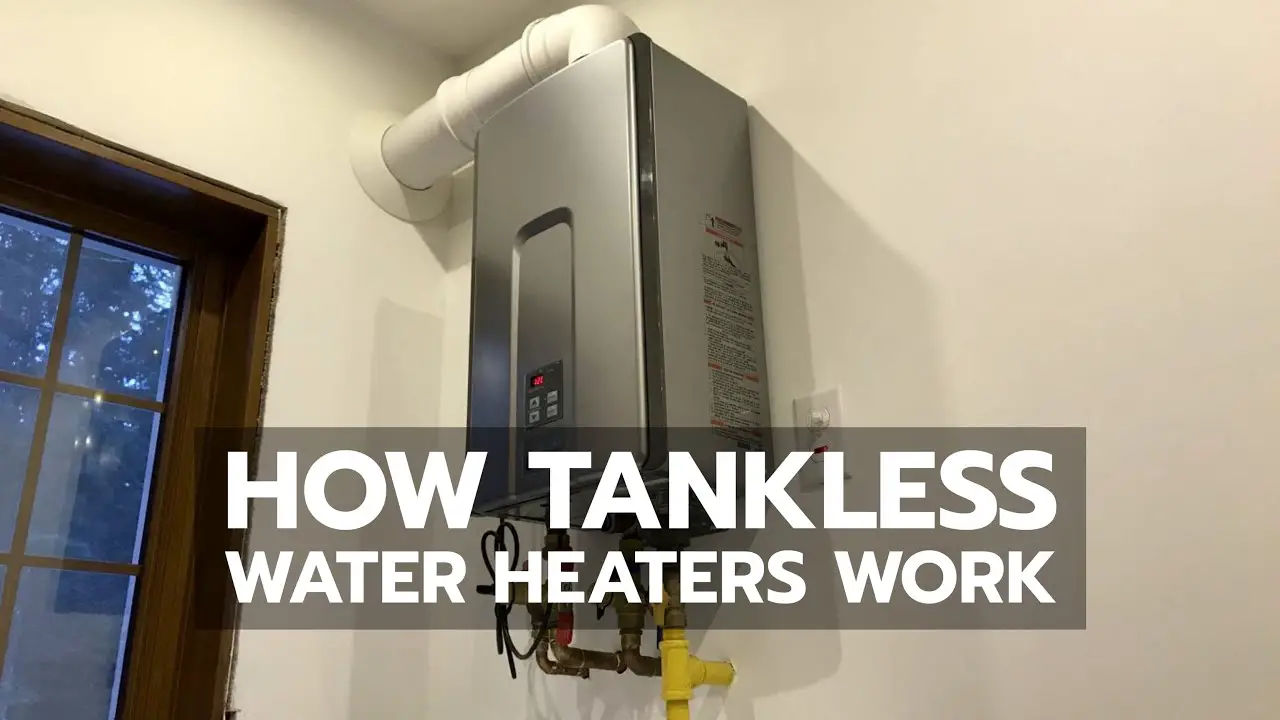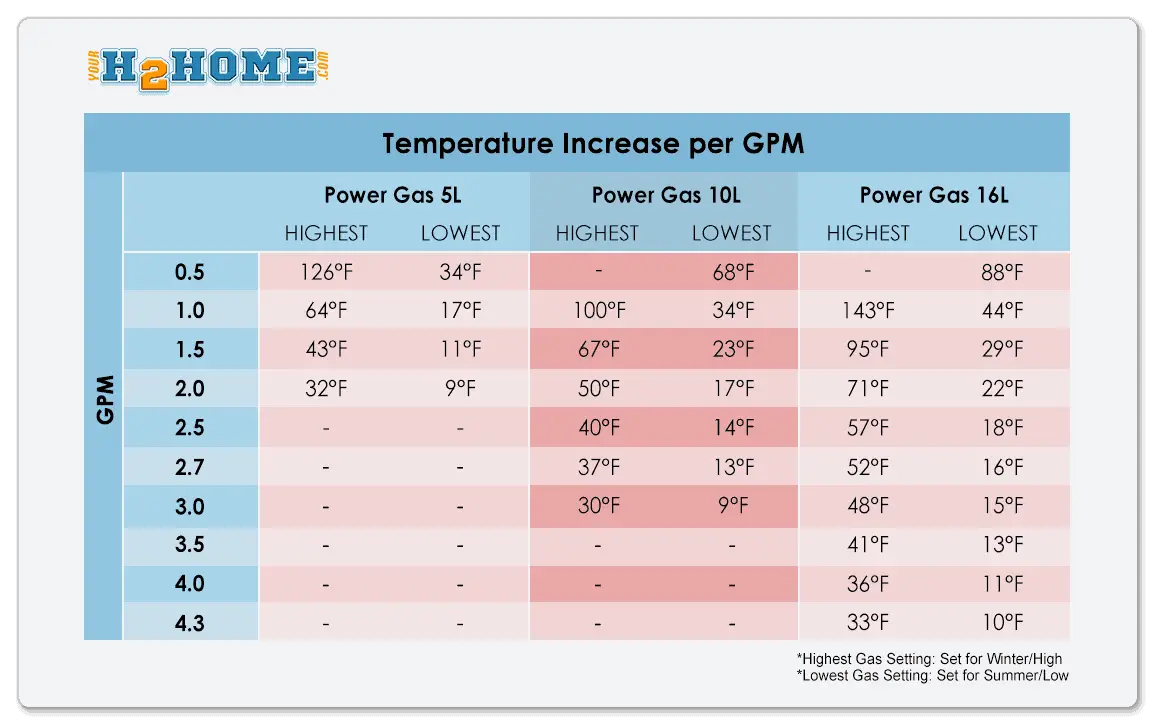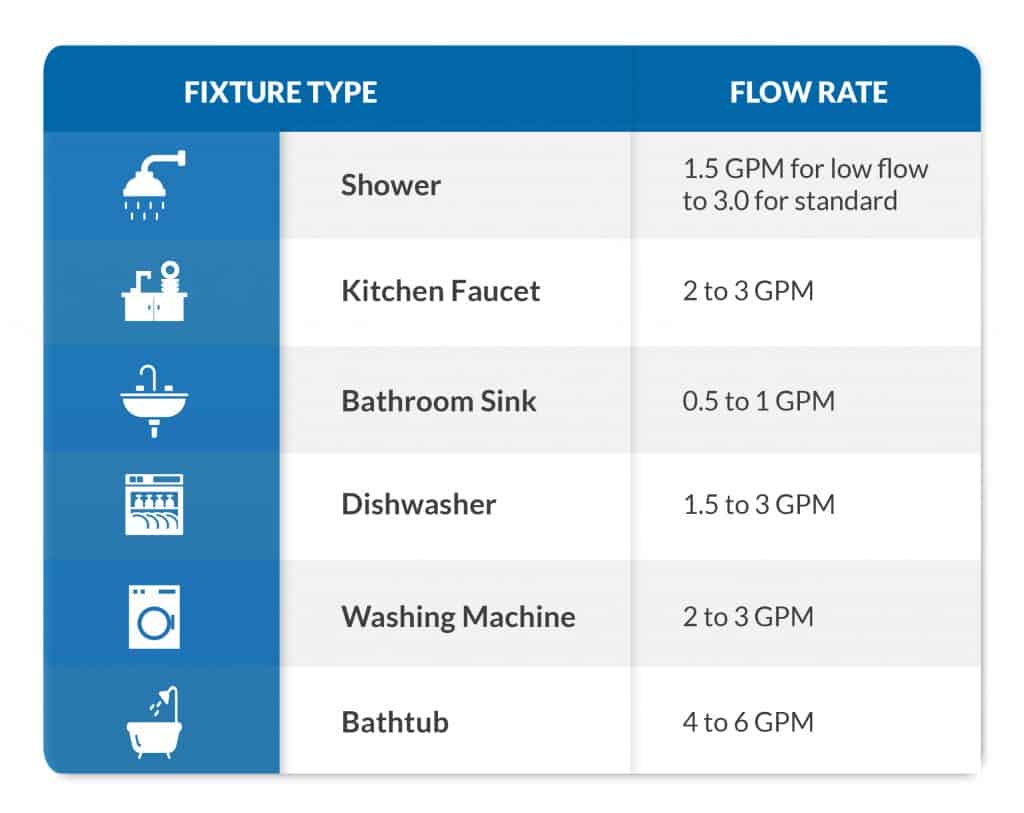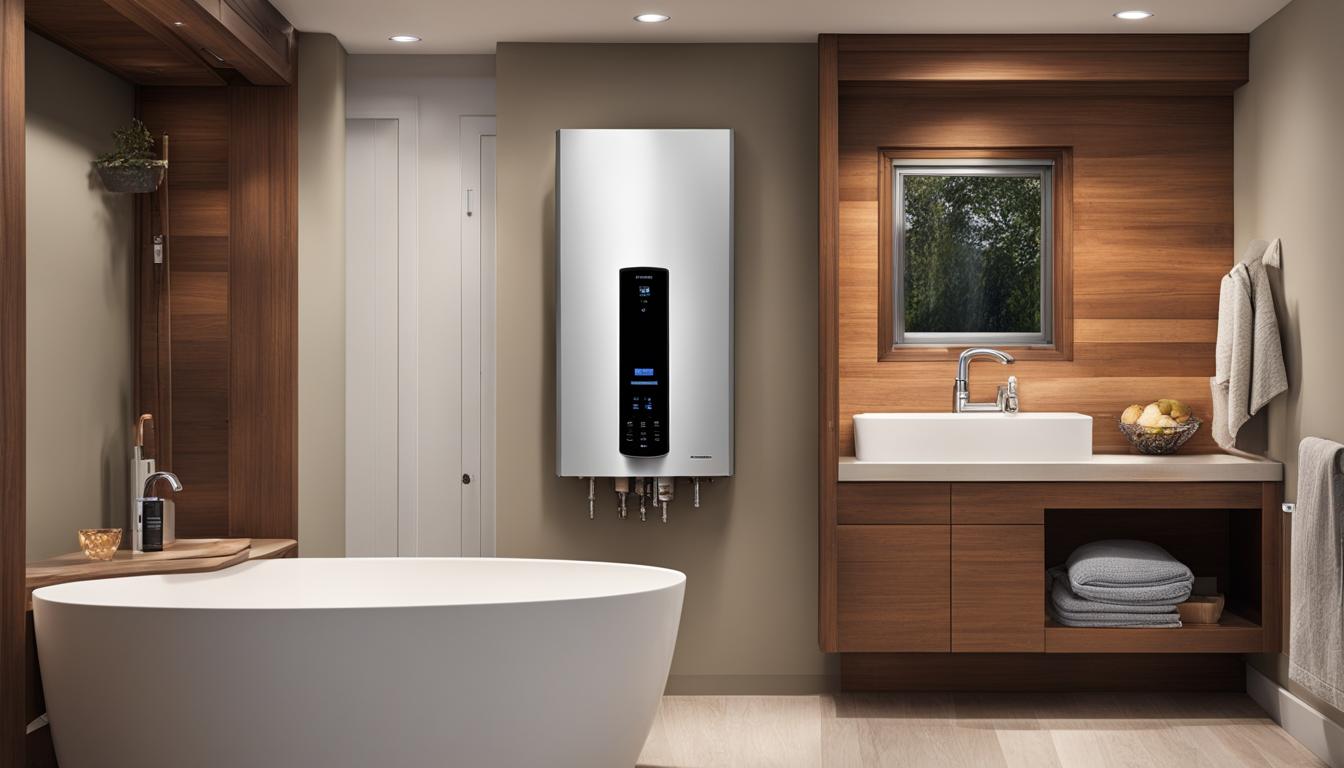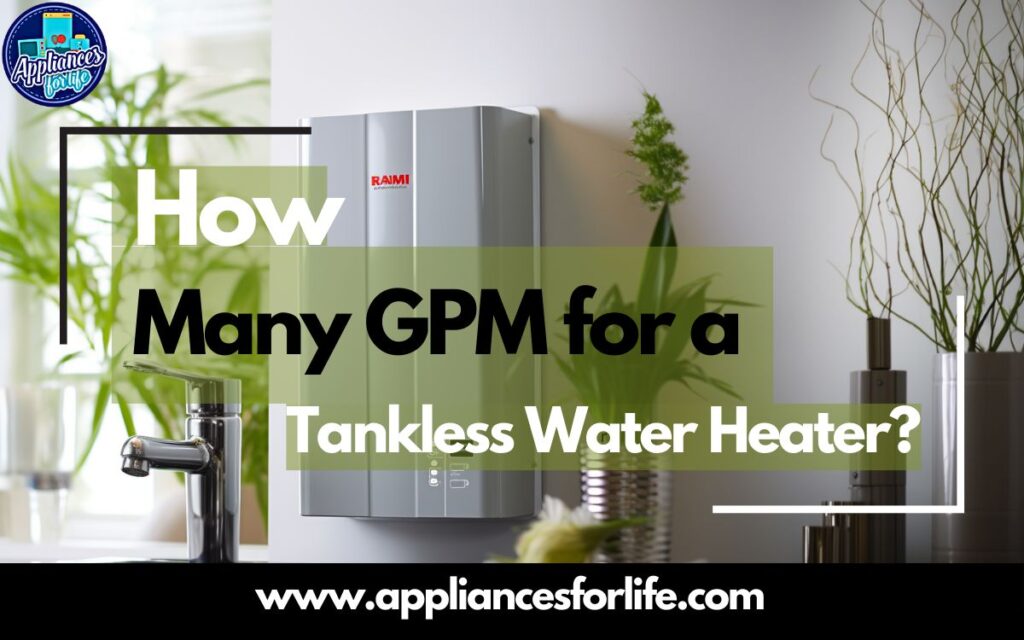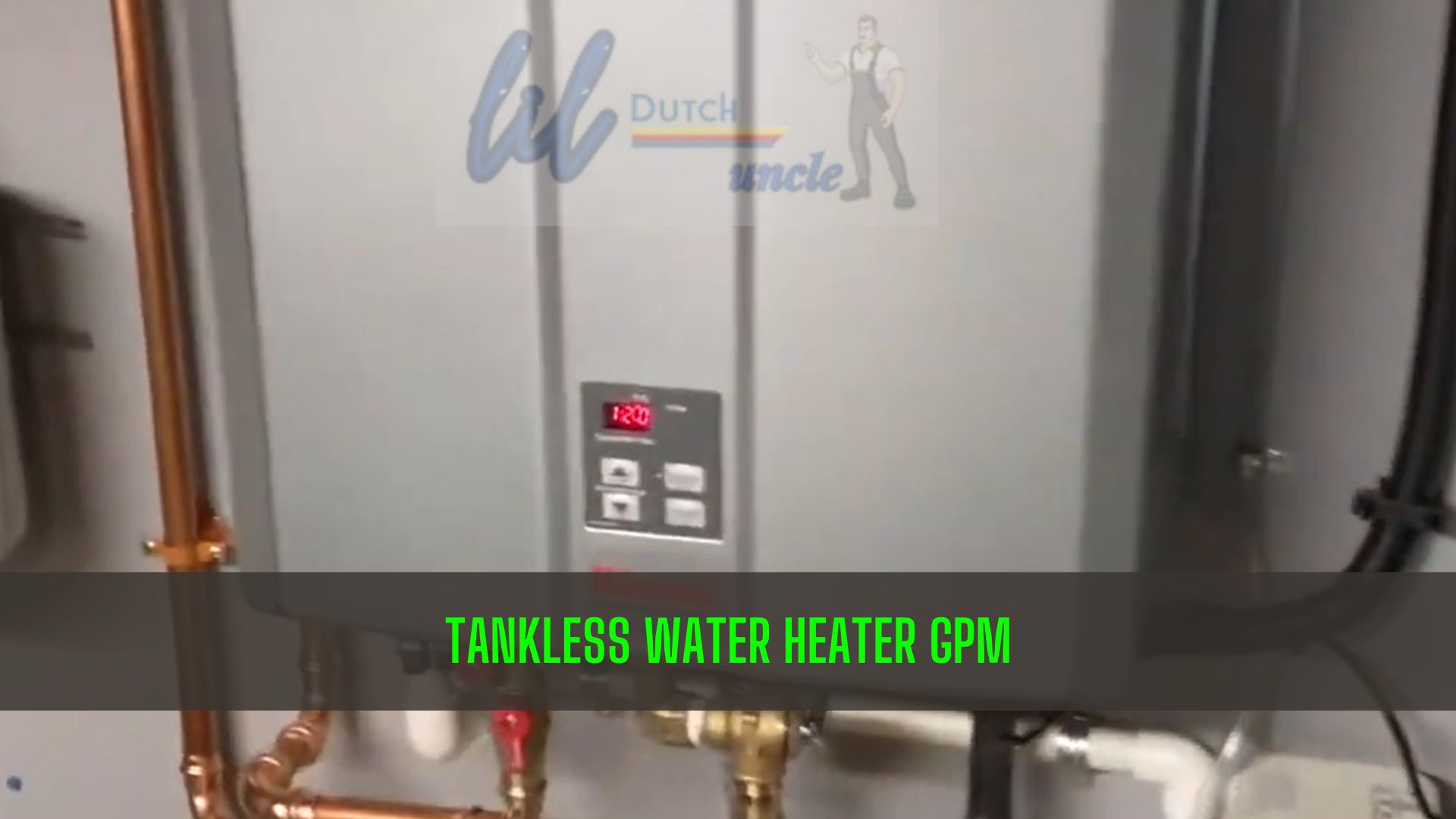Tankless Water Heater How Many Gpm Do I Need

Choosing the right tankless water heater can seem daunting. A key factor in this decision is understanding your Gallons Per Minute (GPM) needs. This guide will break down what GPM means, how to calculate your household requirements, and how it impacts your tankless water heater selection.
What is GPM and Why Does it Matter?
GPM, or Gallons Per Minute, measures the flow rate of water. It tells you how many gallons of water flow out of a fixture (like a showerhead or faucet) in one minute. This is crucial for tankless water heaters because they heat water on demand. Unlike traditional tank water heaters that store a large volume of hot water, tankless units only heat water as you need it.
If your GPM demand exceeds the tankless heater's capacity, you'll experience the dreaded cold water sandwich – a sudden drop in temperature while you're showering. Choosing the right GPM ensures you can run multiple appliances simultaneously without sacrificing hot water.
Understanding Flow Rates of Common Fixtures
Different fixtures use different amounts of water. Here's a general idea of typical flow rates:
- Showerhead: 1.5 - 2.5 GPM
- Bathroom Faucet: 0.5 - 1.5 GPM
- Kitchen Faucet: 1.5 - 2.2 GPM
- Dishwasher: 1.0 - 2.5 GPM
- Washing Machine: 2.0 - 3.0 GPM
- Bathtub: 4.0 - 8.0 GPM (filling)
Note: These are just averages. Check the specific ratings of your appliances and fixtures for more accurate numbers. Many newer fixtures are designed to be water-efficient and have lower GPM ratings.
How to Calculate Your Household GPM Needs
Determining your required GPM involves a simple calculation: identifying the maximum number of fixtures you're likely to use simultaneously and adding up their individual GPM values.
Step 1: List Potential Simultaneous Uses
Think about your daily routine. What's the highest demand you'll likely place on your hot water system? For example, consider:
- Showering while the dishwasher is running.
- Washing clothes while someone is taking a bath.
- Using the kitchen sink while someone is showering.
Be realistic. It's unlikely you'll be running every hot water appliance at the same time. Focus on the most probable scenarios.
Step 2: Add Up the GPM Values
Once you've identified the simultaneous uses, find the GPM rating for each fixture involved. Then, simply add those values together.
Example:
- Shower (2.0 GPM) + Dishwasher (1.5 GPM) + Bathroom Faucet (1.0 GPM) = 4.5 GPM
In this example, you'd need a tankless water heater that can handle at least 4.5 GPM.
Step 3: Consider Your Climate and Temperature Rise
This is a critical step often overlooked. Tankless water heaters are rated based on their temperature rise. Temperature rise is the difference between the incoming water temperature and the desired output temperature.
Colder climates have lower incoming water temperatures, requiring a higher temperature rise to reach a comfortable shower temperature. This means the tankless water heater has to work harder and may not be able to deliver its maximum rated GPM at that temperature rise.
Example:
Let's say your incoming water temperature is 50°F and you want a shower temperature of 105°F. Your temperature rise is 55°F (105 - 50 = 55).
A tankless water heater rated for 7 GPM at a 35°F temperature rise might only deliver 4.5 GPM at a 55°F temperature rise. Always check the manufacturer's specifications for GPM at various temperature rise levels.
Finding Your Incoming Water Temperature
You can estimate your incoming water temperature by:
- Checking historical data for your region (available online).
- Using a thermometer to measure the temperature of your cold water tap after running it for several minutes.
Be sure to check this during the coldest months of the year for the most accurate assessment.
Choosing the Right Tankless Water Heater Size
Now that you've calculated your GPM needs and considered the temperature rise, you can start shopping for a tankless water heater.
Key Considerations:
- GPM Rating: Ensure the unit's GPM rating at your required temperature rise meets or exceeds your calculated GPM needs. It's often better to oversize slightly rather than undersize.
- Fuel Type: Tankless water heaters are available in natural gas and propane models. Gas units generally offer higher GPM output than electric models.
- Venting Requirements: Gas tankless water heaters require proper venting. Consider your existing venting system and any modifications needed.
- Energy Efficiency: Look for models with high Energy Factor (EF) ratings for better energy efficiency and lower operating costs.
- Installation Costs: Installation can be complex and often requires a qualified plumber. Factor in installation costs when budgeting for your new tankless water heater.
- Single vs. Whole-House Units: For smaller homes with lower hot water demands, a single, whole-house tankless unit might suffice. However, for larger homes with high demand, consider multiple point-of-use units or a larger, more powerful whole-house model.
Gas vs. Electric Tankless Water Heaters
The choice between gas and electric tankless water heaters depends on several factors:
Gas Tankless Water Heaters:
- Pros: Higher GPM output, lower operating costs (in many areas), can handle higher temperature rise requirements.
- Cons: Higher upfront cost, requires gas line and venting, more complex installation.
Electric Tankless Water Heaters:
- Pros: Lower upfront cost, easier installation (no gas line or venting required), smaller size.
- Cons: Lower GPM output, higher operating costs (in many areas), may require electrical upgrades to handle the high amperage draw.
Consider your existing infrastructure, energy costs in your area, and your GPM needs when making this decision.
Common Mistakes to Avoid
Choosing the wrong tankless water heater can lead to frustration and discomfort. Here are some common mistakes to avoid:
- Underestimating GPM Needs: Be realistic about your hot water usage. It's better to overestimate slightly than to end up with insufficient hot water.
- Ignoring Temperature Rise: This is a critical factor. Don't rely solely on the unit's maximum GPM rating without considering the temperature rise required in your climate.
- DIY Installation: Tankless water heater installation can be complex and dangerous, especially for gas models. Hire a qualified plumber to ensure proper and safe installation.
- Neglecting Maintenance: Tankless water heaters require regular maintenance, such as flushing the unit to remove mineral buildup. Follow the manufacturer's recommendations for maintenance to prolong the life of your unit.
- Not Considering Venting (Gas Models): Proper venting is essential for gas tankless water heaters to prevent carbon monoxide poisoning. Ensure your venting system meets local codes and manufacturer's requirements.
Getting Professional Advice
If you're unsure about your GPM needs or the best tankless water heater for your home, it's always a good idea to consult with a qualified plumber or HVAC professional. They can assess your hot water usage, evaluate your existing plumbing and electrical systems, and recommend the right size and type of tankless water heater for your needs.
They can also provide accurate installation quotes and ensure that your new tankless water heater is installed safely and correctly.
In Conclusion
Choosing the right tankless water heater GPM is crucial for ensuring a consistent and comfortable hot water supply. By understanding your household's hot water usage patterns, calculating your GPM needs, considering the temperature rise, and avoiding common mistakes, you can make an informed decision and enjoy the benefits of a tankless water heater for years to come. Remember to consult with a professional if you have any questions or concerns.

